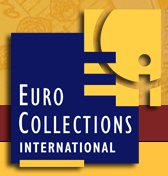The EMU is a three stage process started in 1990 with the aim of creating a unified economic policy for participating countries, culminating in a single currency to be used for all member states. The idea of a unified currency throughout Europe was not a new one even at that time, with talk back in 1929 of a singular monetary system to be used due to the inclusion of new European nations born out of World War I. It is the third stage of the EMU process, however, that is the cause for the commemoration - that being when the first euro coins and banknotes were adopted by the original 11 member states; Austria, Belgium, Finland, France, Germany, Ireland, Italy, Luxembourg, Netherlands, Portugal and Spain. Although it wasn't until January 2002 that the coins and banknotes were actually entered into circulation, the three year transition started in 1999 and for that there is this anniversary. Since the original implementation of the euro currency a number of other countries have fullfilled the necessary economic requirements to begin using the euro, those being at the time of this article Greece (2001), Slovenia (2007), Cyprus and Malta (2008) and Slovakia (2009). Several other countries are planning on adopting the euro currency in future and a complete list, along with other information, can be found at the Euro Collections Frequently Asked Questions page.
Each of the 16 member states to have completed stage three of the EMU process will be issuing coins to mark the anniversary, with Germany issuing one each from its five mints (a total of 20 coins from 16 countries). The look of the coins was chosen through a competition and public vote. First designers were invited to submit their designs for the special commemorative and then residents and citizens of the eurozone countries were asked to vote on their favorite design through an online ballot. The winning design was by Mr. George Stamatopoulos, sculptor at the Minting Department of the Bank of Greece, and features a stick figure inside a a circle, with its left arm outstretched to form part of the euro currency symbol. The image is done in a very hand drawn-style and aims to convey the idea of a single currency and the EMU role in Europe's trade and economic integration history. Where each coin differs from the others is in the inscription, with the country of issue shown above, and the anniversary shown below the central design, written in the native language of the respective issuing country. The 5 German coins are distinguishable by their individual mintmarks, located at the right of the main image.
This is only the second time in the short history of the Euro that the member states have come together in a collective release of a 2 euro commemorative, after the 2007 Treaty of Rome issue. With growing demand in 2 euro commemorative coins this unique series will no doubt gain much interest from the collecting public.
Euro Collections International has a special 2009 Economic and Monetary Union Anniversary section on their website, where you can inspect each of the coins currently on offer.





No comments:
Post a Comment